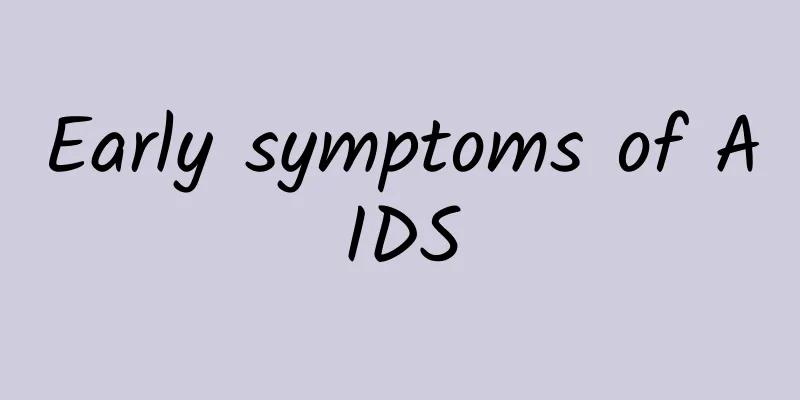Only when you reach this standard can you become a "hearted" person

|
Many people do not understand the heart, which is the engine of the human body. Of course, they are also very concerned about its maintenance. A normal heart can function for more than a hundred years. If it is not properly protected, it will accumulate carbon like an engine, leading to premature aging. Let me tell you what the gold standard of the human body engine is and how to be a good person. 【heart】 The heart is mainly composed of myocardium and is the power organ of the cardiovascular system. Its inner cavity is divided into two halves, left and right, by the atrioventricular septum. Under normal circumstances, they are not connected to each other. The heart is divided into left and right atria and left and right ventricles. The left atrium receives blood rich in oxygen and nutrients from the lungs, and after contraction, it sends the blood into the left ventricle. The left ventricle contracts and sends the blood into the aorta to the whole body. Normally, the circulation process in which blood starts from the left ventricle, flows through the whole body and then returns to the right atrium is called the major circulation. The right atrium sends blood to the right ventricle, and the right ventricle contracts to send blood into the pulmonary artery. The blood discharges carbon dioxide as it flows through the lungs, and then returns to the left atrium of the heart through the pulmonary veins after carrying oxygen. People call this circulation process the small circulation. It is precisely because of the continuous operation of large and small circulations in the body that people can survive healthily. [Heart size] The size of the heart can be measured using the cardiothoracic ratio (the ratio of the transverse diameter of the heart to the transverse diameter of the chest cavity). The ratio of a normal human heart is 0.42~0.48. If it exceeds 0.5, it is abnormal. Alternatively, you can make a fist with one hand and wrap it with the other hand so that its size is approximately the same as your heart. The long diameter of an adult heart is about 12 to 14 cm, the transverse diameter is 9 to 11 cm, and the anterior-posterior diameter is 6 to 7 cm. The weight of the heart The weight of the heart increases as the body grows. The weight of an infant's heart is only 16 to 17 grams. It doubles at one year old, triples at five years old, and ten times at 16 years old. The weight of an adult's heart is about 250 grams, but there are slight differences between people and ages. The beating of the heart: The origin of the heartbeat is the sinoatrial node, which is located in the upper part of the right atrium. The "commands" issued by it are transmitted along a special conduction pathway in the heart to the atrioventricular node at the junction of the atria and ventricles, and then transmitted to the atrioventricular branches in turn. The atrioventricular bundle is divided into two bundles, left and right, which conduct to various parts of the ventricle. The sinoatrial node sends out impulses regularly, causing the heart to beat rhythmically. Of course, the beating of the heart is also affected by nerves, body fluids, etc. The heart beats about 100,000 times a day. Children under 3 years old beat more than 100 times per minute, adults beat 60 to 100 times per minute, and most people beat 65 to 85 times per minute. Women generally beat slightly faster. 【Heart rest】 Although the heart keeps beating, it also needs time to rest. If a person's heart beats 75 times per minute, then the duration of one heartbeat is 0.8 seconds. This time is called the cardiac cycle, which is the time it takes for the heart to "beat". During these 0.8 seconds, the contraction time of the atrium is 0.1 seconds, and the remaining 0.7 seconds is the resting stage of the atrial muscle. The time for ventricular contraction is 0.3 seconds, so the ventricle is in a resting phase for 0.5 seconds. This shows that in every beat of the heart, more than half of the time is actually resting. 【Strength of the Heart Muscle】 The myocardium is the strongest organ in the body, and the work it does every day is equivalent to lifting a one-ton object to a height of five stories. When an adult's heart beats 60 to 80 times per minute, the ventricular contraction volume is about 60 to 80 ml of blood each time, and 4000 to 5000 ml of blood is pumped out per minute. The amount of blood pumped out in 24 hours is as much as 7,000 kilograms, and the total amount in three and a half years is enough to float a 10,000-ton ship. Of course, the amount of blood pumped out when a person is exercising is five times that when he is at rest. An adult's body has about 5000 to 6000 milliliters of blood. The heart can pump so much blood, pump the blood into the blood vessels, and then transport it back. Relying on the rhythmic beating of the heart and the elasticity of the blood vessels, the blood circulates continuously. A normal, healthy heart can work continuously for more than a hundred years. |
>>: Five sentences can make people live to 130 years old
Recommend
How about soaking Poria cocos, lotus seeds and Cuscuta seeds in water?
Modern health care is a very popular topic. Almos...
Traditional Chinese Medicine Treatment for Hyperhidrosis of Hands and Feet
Some people often have symptoms of excessive swea...
Simiao Powder for Gout
Gout usually occurs late at night. The patient wi...
What to do if you are pregnant with cervical erosion
Some women with cervical erosion must pay more at...
How to calculate ovulation period when you want to get pregnant?
With the development of society and some populati...
Can I eat crabs when my aunt comes?
Crab is a must-eat seafood in autumn. Various kin...
Is it correct to land on your heel first when walking?
The correct walking posture should be that the up...
Not bleeding during menstruation
Many women find that they still have vaginal blee...
What medicine to use for HPV infection
We all know that HPV is also known as genital war...
What is peripheral neuropathy?
What should we do with peripheral neuropathy? For...
Why can’t I get pregnant even though I ovulate?
Everyone knows that the first prerequisite for a ...
The difference between night sweats and sleep sweating
Many people sweat while sleeping. In addition to ...
My throat gets dry when I breathe through my nose
Many people with chronic rhinitis always have dry...
How to treat potassium permanganate burns
Potassium permanganate turns red instantly after ...
What are the effects of Rhubarb and Stingworm Pills?
Dahuang Zhechong Pills is a common Chinese medici...









